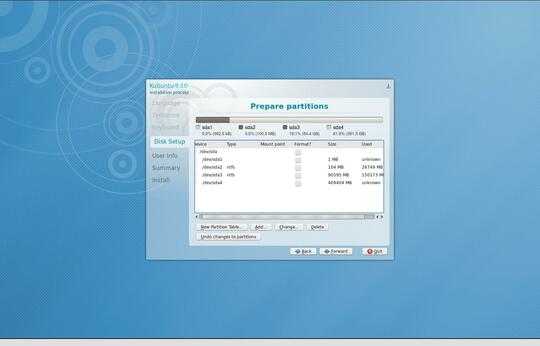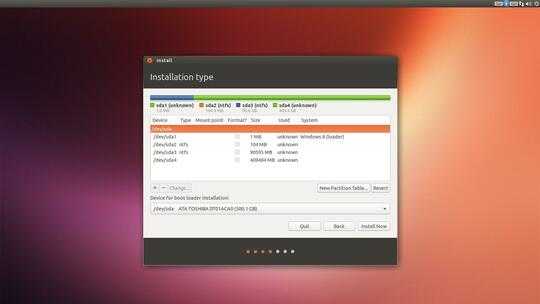0
1
Currently I am using Windows 8 Pro on my system. I want to use Ubuntu or Kubuntu with windows. I tried to install both of it. During installation, when I reached the page to select the partition to install Ubuntu or Kubuntu I was confused about which partition to choose. I will provide my screenshot below. Please tell me which one should I choose. Also there are 2 more partitions shown in the partition list. I don't know where it came from. My system's hard disk has only 2 partitions.

As I was suggested, I created a new partition on sda4 and tried to install Ubuntu 13.04. The same old problem is still there. Only 4 partitions are showing still. 
Can I delete sda1 or sda2 partitions ? If possible, how ?
What I also noted is that the Install alongside Windows option is not showing too. How can I solve these issues and install Ubuntu successfully ?
If you delete either sda1 or sda2 you will make Windows unbootable. – Ramhound – 2014-03-19T15:35:34.787